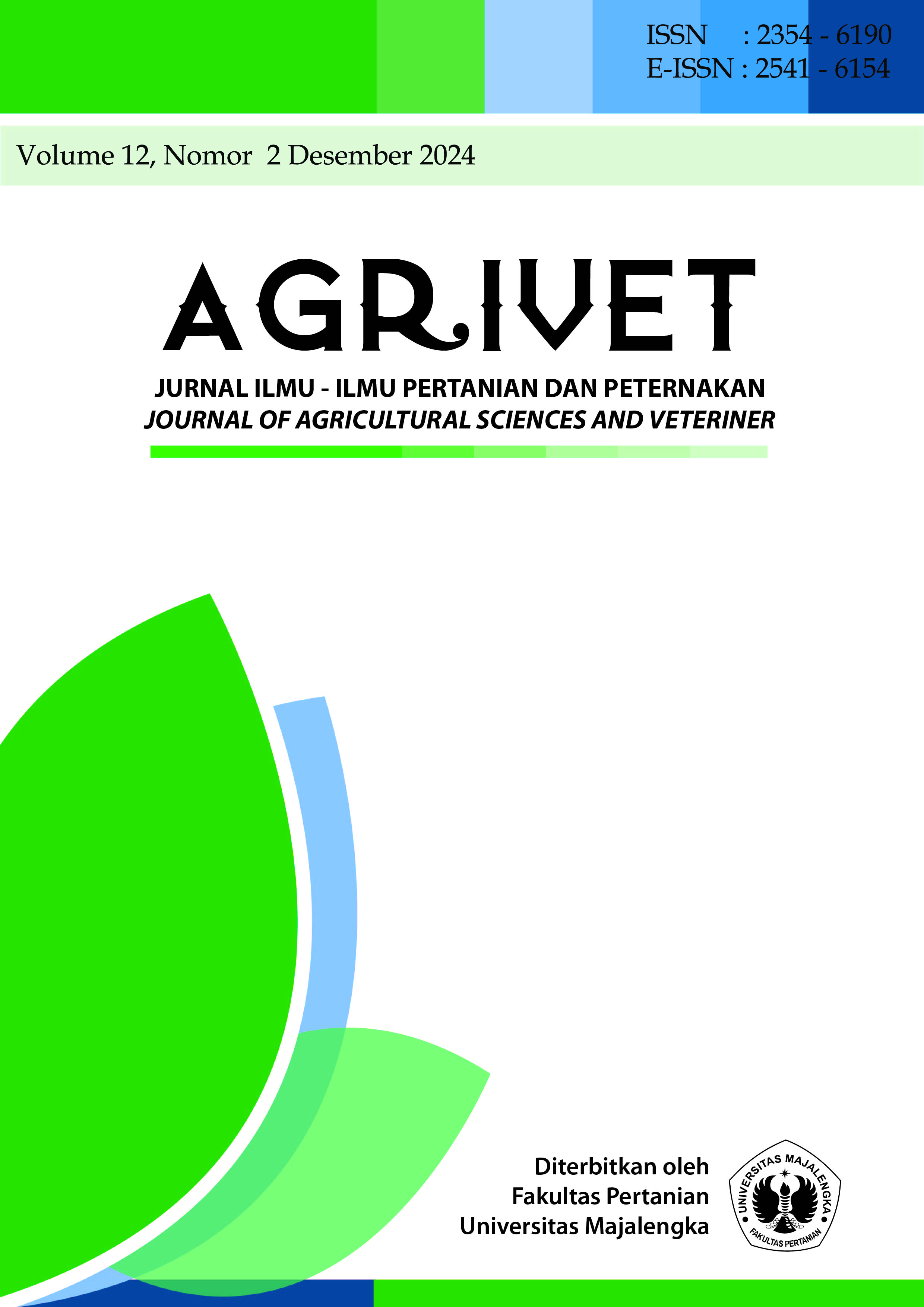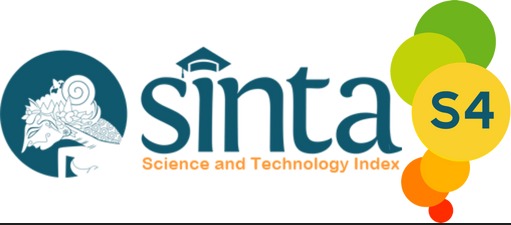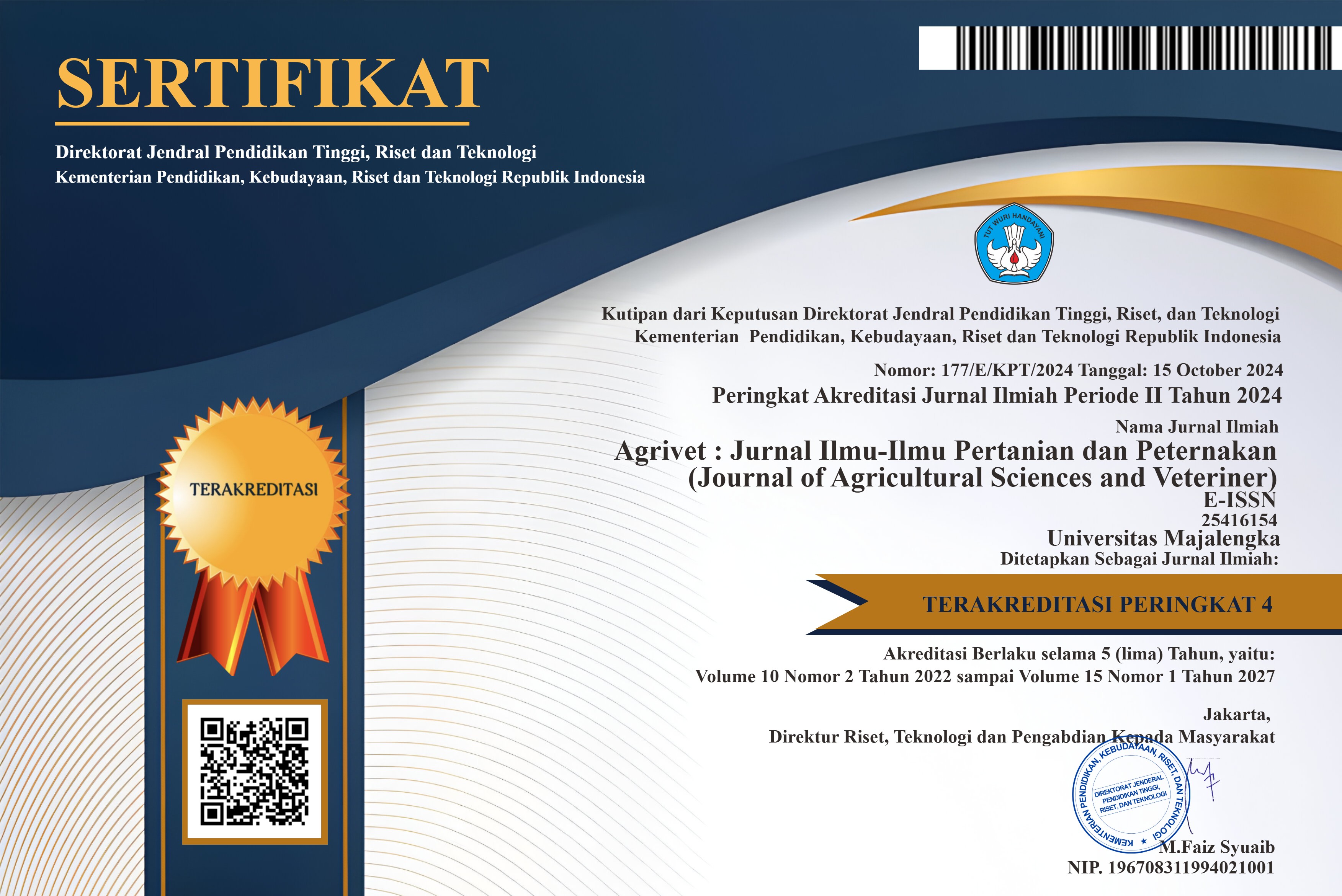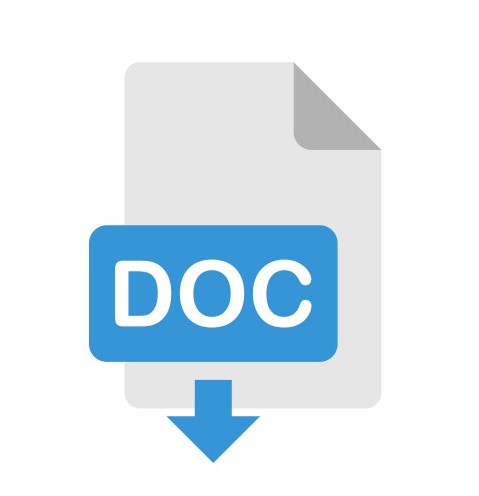Analisis efisiensi pemasaran timun apel di Desa Tanjung Pakis, Kecamatan Pakis Jaya, Kabupaten Karawang
DOI:
https://doi.org/10.31949/agrivet.v12i2.10686Abstract
Apple cucumber, an annual horticultural crop, is primarily cultivated in the coastal area of Tanjung Pakis Village, Karawang Regency, which serves as a significant production center for this crop. These cucumbers, which are a hybrid of cucumber and melon plants, remain relatively unknown in Karawang due to limited marketing and a small number of farmers involved. The research aims to explore the marketing channels and their effectiveness in the apple cucumber supply chain. The study included a sample of 20 farmers selected through Census Sampling, alongside 2 middlemen, 1 wholesaler, and 7 retailers identified using Snowball Sampling. Primary data was collected via questionnaire-based interviews, complemented by secondary data from sources like BPS, the Agriculture Office, and the Tanjung Pakis Village Office. Analysis focused on revenue, profit margins, farmer's share, and overall marketing efficiency. Results identified four distinct marketing patterns: Channel I (Farmers-Middlemen-Wholesalers-Consumers), Channel II (Farmers-Middlemen-Retailers-Consumers), Channel III (Farmers-Wholesalers-Consumers), and Channel IV (Farmers-Retailers-Consumers). Notably, Channel IV emerged as the most efficient, characterized by the lowest marketing margin of Rp. 5,000/kg, a farmer's share exceeding 66.67% (indicating efficiency), and a marketing efficiency ratio of 0.08 (EP < 1 indicating efficiency). These findings underscore the potential for optimizing apple cucumber marketing strategies to enhance profitability and promote wider adoption among farmers in the region.
Keywords:
apple cucumber, marketing, marketing efficiencyDownloads
References
Bayfurqon, F. M., Khamid, M. B. R., dan Saputro, N. W. 2019. Pertumbuhan dan hasil timun apel lokal Karawang dengan kerapatan tanaman yang berbeda di daerah Pakis Jaya, Karawang. Jurnal Agrotek Indonesia, 4 (1): 33-38.
Darise, R., Abubakar, A., dan Nur’azkiya, L. 2021. Analisis kelayakan usahatani timun apel (studi kasus : di Desa Tanjung Pakis, Kecamatan Pakis Jaya, Kabupaten Karawang). Jurnal Ilmiah Wahana Pendidikan, 7 (3): 12-17.
Gultom, H. L. T. (1996). Tataniaga Pertanian. USU Press : Medan
Hikmah, Nurchayati, dan Ratnawati, A. T. 2015. Pola pendistribusian buah lokal hasil
produksi di Kota Semarang. In Prosiding Semnas Hasil-hasil Penelitian dan Pengabdian LPPM Universitas Muhammadiyah Purwokerto (pp. 17–23). Purwokerto.
Irawan, Bambang. 2007. Fluktuasi harga, transmisi harga dan margin pemasaran sayuran dan buah. Jurnal Analisis Kebijakan Pertanian, 5 (4).
Mubyarto, 1989. Pengantar ekonomi pertanian. Lembaga Penelitian, Pendidikan dan Penerangan Ekonomi dan Sosial (LP3ES). Jakarta.
Novia, Nanda. A. 2020. Analisis filogenetika tanaman timun apel berbasis metode RAPD menggunakan primer Opa 12 dan Opa 18. Skripsi. Universitas Pendidikan Indonesia, Bandung.
Puspita, Indah. R dan R.M. Wardhani. 2013. Analisis efisiensi pemasaran komoditi cabai (capsicum annum I) pada beberapa saluran pemasaran di Kota Madiun. Jurnal Agritek, 14 (1).
Soekartawi. (1989). Prinsip dasar ekonomi pertanian. Rajawali Press, Jakarta.
Sudiyono. (2002). Pemasaran pertanian. Universitas Muhammadiyah Malang. Kota Malang.
Sugiyono. ( 2013). Metode Penelitian Kuantitatif, Kualitatif, dan R&D. Alfabeta. Bandung.
Susanto, B. (2019). Tantangan Pemasaran Pertanian di Indonesia. Penerbit Kencana.
Syamsul, R. (2021). Pengembangan industri kuliner berbasis makanan tradisional. CV Budi Utama, Sleman.
Published
How to Cite
Issue
Section
License
Copyright (c) 2024 Cindy Sofia, Kuswarini Sulandjari, Suhaeni

This work is licensed under a Creative Commons Attribution-ShareAlike 4.0 International License.
An author who publishes in the Jurnal Agrivet agrees to the following terms:
- Author retains the copyright and grants the journal the right of first publication of the work simultaneously licensed under the Creative Commons Attribution-ShareAlike 4.0 License that allows others to share the work with an acknowledgment of the work's authorship and initial publication in this journal
- The author is able to enter into separate, additional contractual arrangements for the non-exclusive distribution of the journal's published version of the work (e.g., post it to an institutional repository or publish it in a book) with the acknowledgment of its initial publication in this journal.
- The author is permitted and encouraged to post his/her work online (e.g., in institutional repositories or on their website) prior to and during the submission process, as it can lead to productive exchanges, as well as earlier and greater citation of the published work









